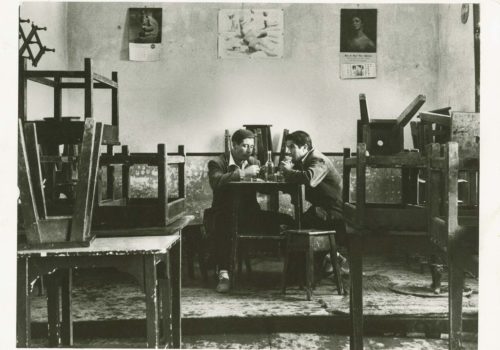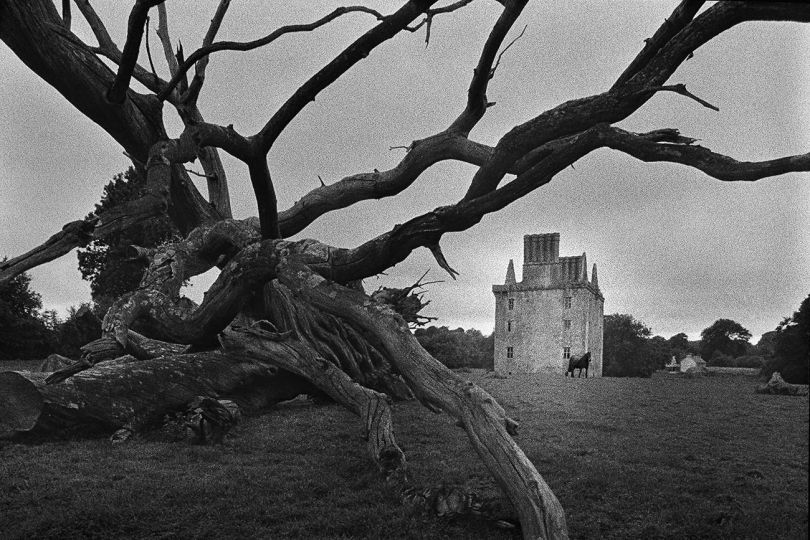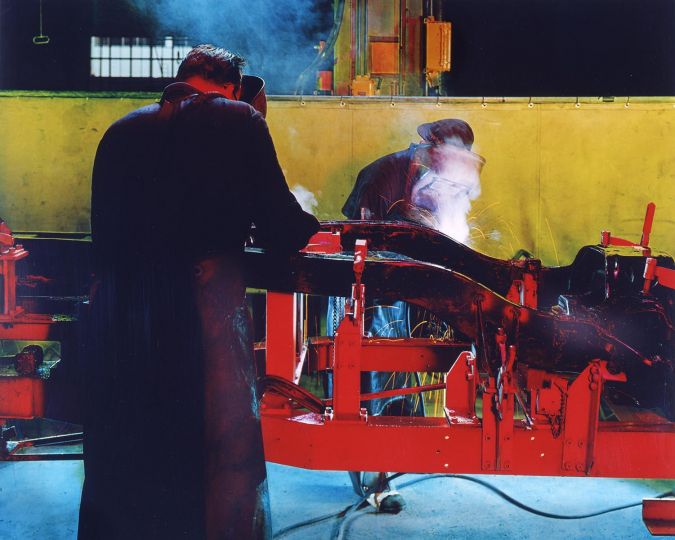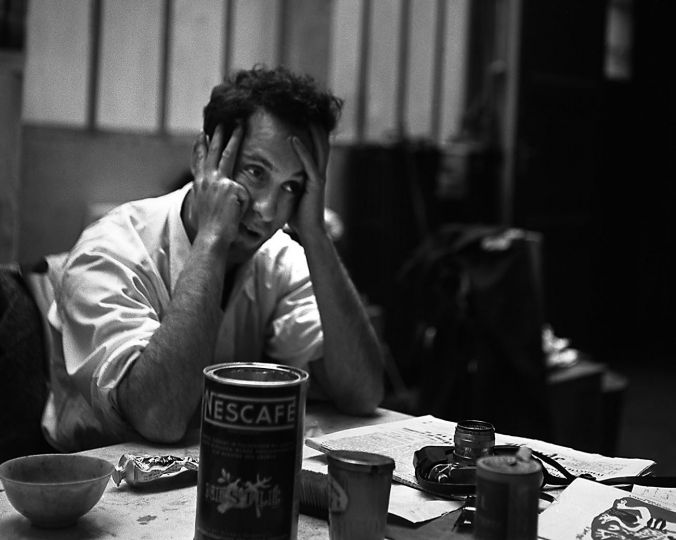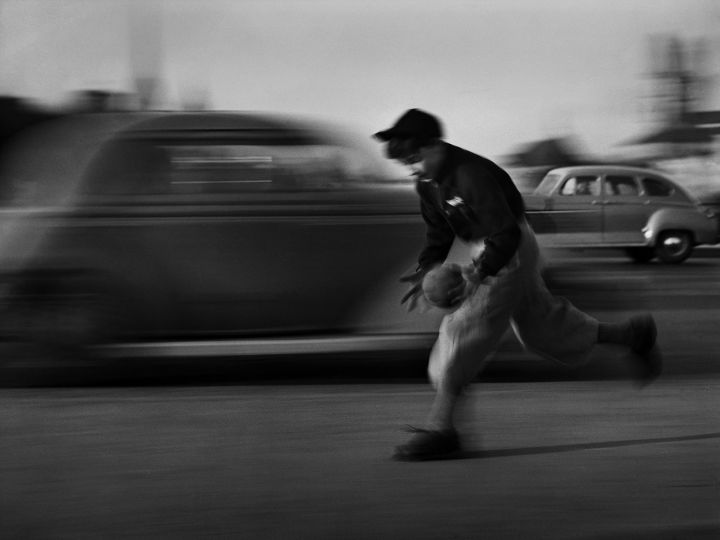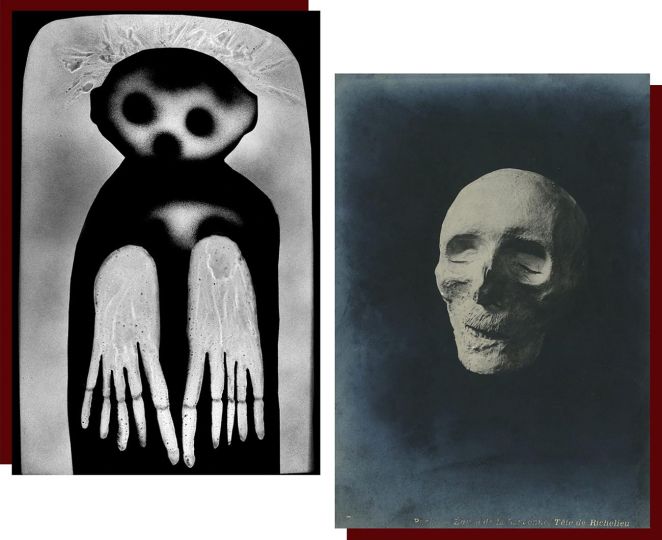The future art museum of the Universidad de Navarra –currently under construction and that will be inaugurated in autumn 2014- aims to establish a true bridge between the University and society. This will be the case even be from a geographical point of view, as it will be situated close to the Pamplona campus.
The «Museum Universidad de Navarra» has been founded on the three pillars of research, teaching and dissemination. With respect to the first pillar, a characteristic of the Museum will be its multidisciplinary approach to art. Having been spawned from the very heart of an academic centre, it will be encircled by different areas and disciplines of study, which will engender research based on synergies. The «Museum Universidad de Navarra» will search for points of contact between different Faculties, Departments and Schools, and it will represent a new centre of reference for the University. Likewise, the Museum has been conceived with a vocation for teaching, as a channel to educate the university community and to offer the Region of Navarre a new service. Situating the Museum on the campus will improve the quality of education in the classrooms and it will help to extend the impact of art in all the faculties and in their student’ university life. Finally, the Museum will set up a dialogue between its artistic activity and the contemporary regional, national and international creative scene, through temporary expositions, presentations of the Museum’s collections, public programmes, and of other artistic events and performances. It will be a centre of contemporary visual culture that will concentrate and expand the cultural, artistic and academic activity of the centre.
The building’s 11,000 m2, designed by Rafael Moneo (the only Spanish architect to have been awarded the Pritzker prize), will be distributed over three floors. The principal spaces will be the 10 exhibition halls and the Theatre, with more than 700 seats.
The photographic collection brings together two legacies and a collection donated by María Josefa Huarte. The photographic collection of almost 11,000 pieces was first established on the basis of the works and collection of the photographer José Ortiz-Echagüe, which were donated in 1992 and that in terms of quality, represents the most relevant collection of Spanish photography, with contributions from authors like: James L. Clifford, Jean Laurent, Louis Declerq, Napper, Frith, Robert Capa, Gustave Beaucorps, Cartier-Bresson and up to contemporary photographers like Lynne Cohen, Bleda and Rosa, Roland Fischer and Joan Fontcuberta, among others. It contains works by Spanish and International artists from the primitive age of photography in the 19th Century until current times. The other collection donated by María Josefa is made up of 50 or so works by Spanish and International artists like Kandinsky, Palazuelo, Chillida, Oteiza, Tàpies, Picasso or Rothko.
Name, Surname, position at the UNAV of the person that will respond to the questions.
Valentin Vallhonrat, Curator.
When was the Museum’s photographic collection created?
The photography collection was first established in 1992 when the university received the donation of the works and collection of the photographer José Ortiz-Echagüe. Today it contains nearly 11,000 works and it constitutes the most relevant collection of photographs taken in Spain, with contributions from: Clifford, Laurent, Lecrerq, Capa, Beaucorps, and even contemporary artists such as Cohen, Bleda, Rosa and Fontcuberta, among others. It contains works by Spanish artists and those from outside of Spain, both from the primitive age of photography in the 19th Century until current times.
How is the department of photography organized in order to maintain and develop the collection?
The Museum does not have a separate photography department as such. The team is made up of four people that cover the areas of curation and conservation, and they each carry out the tasks of registration, documentation, digitalization, etc, for the entire museum collection. Together they deal with all the artistic disciplines included in the museum’s collection, painting, sculpture, video, photography, etc. It is a well experienced team that has been working for nearly two decades since the photography collection was brought together at the University, and it has been reorganized with the creation of the Museum and with new additions.
Currently, how many photographs and negatives are held in the collection and can you give me some details of the authors?
To date there are almost 11,000 photographs and 100,000 negatives.
The collection holds the legacy of José Ortiz Echagüe, Juand Dolcet and the Conde de la Ventosa. In addition, over the past 14 years the University has built up a collection of photographs from the XIX, XX and XXI Centuries that contains the works of photographers such as Clifford, Laurent, Tennison, Leygonier, Beaucorps, Disdéri, Levy, Braun, Stirling, Masson, Massari, Wheelhouse, Martínez Sánchez, Garzon, Marés, Opisso, Alguacil, Casas Abarca, Batllés, Camisans, Catalá Pic, Centelles, Godés, Masana, Sala, Francisco Gómez, Ontañón, Elías Dolcet, Masats, Romero Urbistondo, Leonardo Cantero, Catalá Roca, Gabriel Cuallado, Ramon Massats, Cartier-Bresson, Robert Capa, Branguli, Ramón Marin, Xavier Miserachs, Pere Formiguera, Roland Fischer, Joan Fontcuberta, Basilico, Lynne Cohen and many others.
In what activities has the museum used the photographic collection outside of its installations? I see that there is a reference to the museum in London in 2013 and Sao Paulo in 2012, part of the programme «a punto of desembalar» (About to be unpacked). Was photography included in this programme?
The first exhibition of the «Museum Universidad de Navarra» was inaugurated on the 14th of March this year, in collaboration with the Museum Nacional D’Art of Catalunya (MNAC). The exhibition was curated by Javier Ortiz-Echagüe, and it contained 80 photographs from the collection that details the trips of José Ortiz Echagüe to Morocco between 1909 and 1915.
However, the photography collection began its cycle of exhibitions in 1998, and more than 20 shows have been organized over more than a decade. Some of these have been produced by the museum alone and others in collaboration with other institutions, among which we should highlight:
Ortiz Echagüe. Photography 1903-1964. A travelling exhibition that presents an anthology of this photographer’s work. 1996 MNCARS, Madrid, MNAC, Barcelona and Hôtel de Sully, Paris in 1997.
The first look: the origins of photography in Spain. Pamplona City Council, 23rd November, 1999 – 23rd January, 2000.
Spanish portrait photography in the XIX Century. Pamplona City Council, 1st September – 12th October, 2000.
The Royal Armoury, Madrid, in XIX Century photography. Pamplona City Council, 21st November – 16th December, 2001.
From Paris to Cadiz. Calotyping and collodion. Museum Nacional of Arte of Cataluña (MNAC). 11th March – 23rd May, 2004. XIX Century Collection.
Napper and Frith. Museo Nacional De Arte De Cataluña, Barcelona 2008.
Prophecies, 2009-2011, University of Salamanca.
MuViM, Valencia 2010 and Museum de la Ciudad, Madrid, 2011.
What are the current perspectives for photography at the UNAV, both for your own collection and for your exhibition programme? How many photography exhibitions will you organize each year and what will be the selection criterion?
The programme focuses on photography since its origins, in terms of the technology that became available to view mankind and all his activities. It is inevitable to focus to a large extent on the technological issues when dealing with the XIX Century, the period in which photography was born, yet we also want to address other facets of this period, including artistic and scientific issues, and how photography can be understood as a means of communication.
The programme covers the evolution of photography as a medium and the use to which it is put. There is a focus on the change from the XIX to the XX century, the appearance of different techniques of reproduction that allow photography to be included in printed media. It also centres on the evolution of the photographer’s language at the beginning of the XX century, especially that associated with publicity and architecture. Likewise, attention is paid to the dialogues and controversies of the end of the XIX and beginning of the XX century due to the eruption of photography onto the art scene at that time, focusing particularly on the avant garde and the Spanish Civil War.
Without attempting to be exhaustive, the programme brings us up to the work of modern times through the work of the contemporary artists held in the collection.
The museum has structured its programme around two cycles of annual exhibitions that coincide with the academic year that begins in autumn. We aim to begin one cycle in autumn and the next in spring. However, it should be stressed that the cycles of the exhibitions combine historical photographic projects with contemporary projects in which the image is not necessarily static. Thus, the diverse disciplines that use photography as their base are encompassed within these exhibitions, be they static or taking in movement. Accordingly, we fulfil the need to cover a retrospective historical and thematic programme on the one hand, while on the other, we aim to address the need to organize exhibitions that reflect the current use of photography.
What special programmes have been created or are being prepared for photography at the UNAV? Please tell us a little about the programme «Tender Puentes» (Building Bridges)?
“Tender Puentes” (Building Bridges) is an initiative that the Museum Universidad de Navarra began in 2006, with the aim of establishing a dialogue between current photographers and the work that the pioneers of Spanish photography produced in the XIX century, and that is held in the Museum’s Collection.
The Museum Universidad de Navarra, set up this project in 2006, curated by Santiago Olmo and Rafael Levenfeld, and it has since grown to encompass nearly 400 ad hoc pieces of work produced by 14 contemporary artists. In addition, it has led to the edition of 9 publications and with another 5 in production.
Different prestigious contemporary authors are being invited to participate in the study and to reflect on the period when photography was founded, with the objective of exploring and identifying their own links to this period and what distances them from it. The authors are invited to develop their photographic projects while maintaining a dialogue with the key pieces universally relevant to photography that are held in the Museum’s Collection.
The Museum Universidad de Navarra’s photography collection covers the history of photographs taken in Spain from the origins of this discipline to modern day, focusing on photography from the documentary point of view, both in relation to the real and imaginary.
Roland Fischer, Ángel Fuentes, Manuel Brazuelo, Lynne Cohen, Jordi Bernadó, Sergio Belinchón, Gabriele Basílico, Xavier Ribas, Jorge Ribalta, Carlos Cánovas, and the national prize winners María Bleda and José María Rosa, Joan Fontcuberta and Javier Vallhonrat, are some of the artists that have participated. A total of 18 artists have so far offered us their perspective of the history of photography.
The MNAC in Barcelona is currently presenting an exhibition of José Ortiz-Echagüe that is co-produced by the UNAV. Can you tell us how this exhibition came about, from its design to setting it up at the MNAC?
The exhibition forms part of the Museum’s activities and of the agreement reached with regards the legacy of the photographer Ortiz Echagüe. In 1998, a tremendous effort was made to bring the catalogue of this author’s works up to date and the image of the artist himself, given that he was such a fundamentally important figure in the history of Spanish photography. Indeed, his work had become somewhat fragmented and poorly studied, a situation that needed to be addressed urgently in order to return him and his work to its rightful position in the cultural scenario in Spain.
North Africa formed part of the same proposition and commitment. The work of Ortiz Echagüe continues to be studied at the Universidad, and there is an ongoing project at the Museum (UNM) to review his production and work in its entirety. North Africa is the result of a critical approach to the period in which the work of Ortiz Echagüe originates. A period in which his documentary interests became united with his mastery and domination of the techniques used in the pigment printing process.
The research project, as well as the editions and exhibitions that it has spawned, have been overseen by Javier Ortiz Echagüe, a young yet experienced art historian and university professor who joined the curation team at the UNM in the third trimester of 2013.

